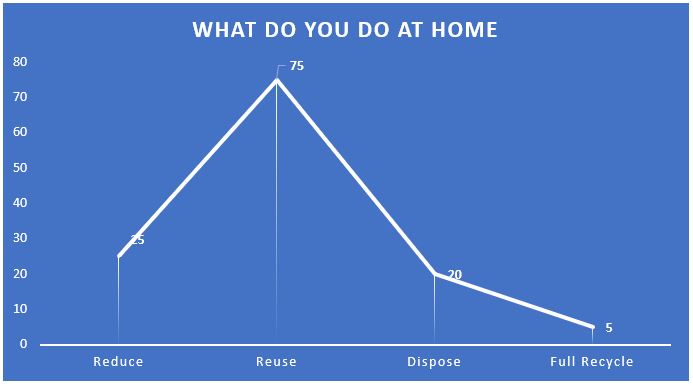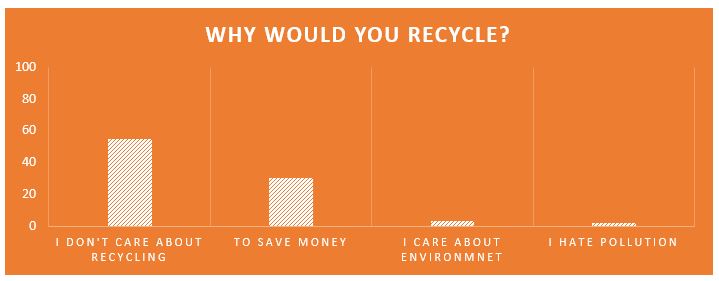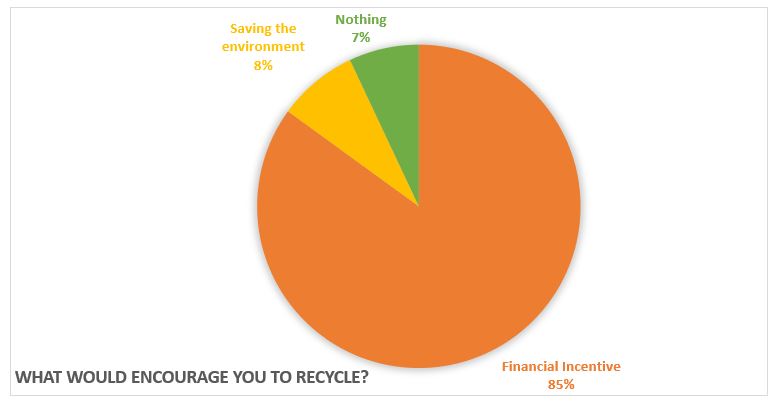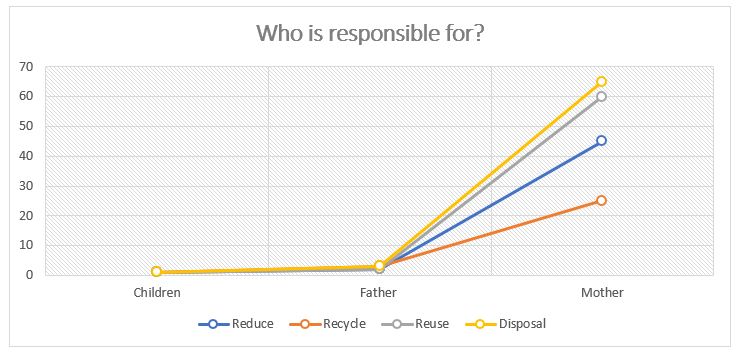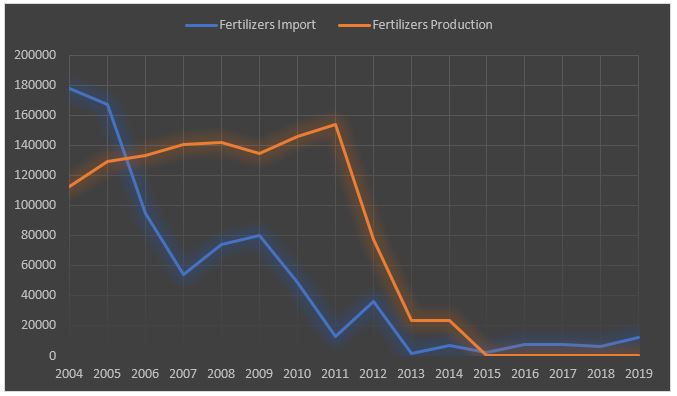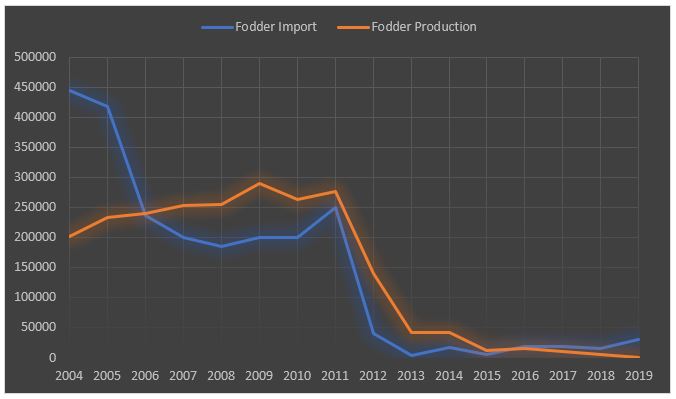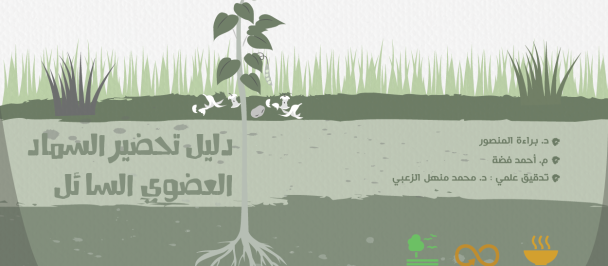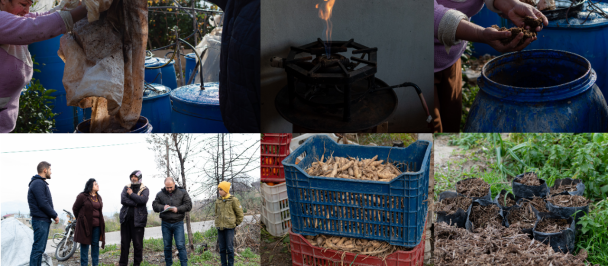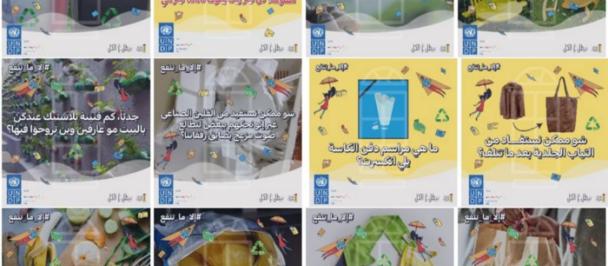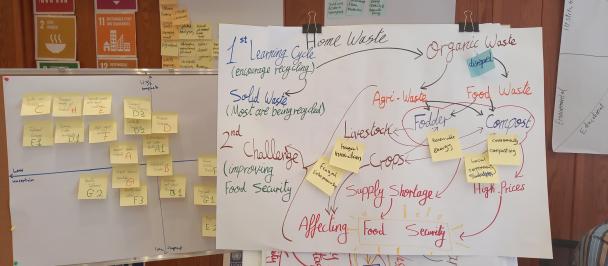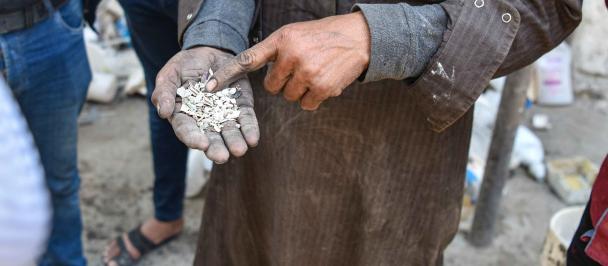Muaz Jadaa
Head of Exploration
Rudyard Kipling once wrote, "If history were taught in the form of stories, it would never be forgotten."
When reading that I remembered my statistics professor who kept saying “Nothing can help tell a story like data”. We did two challenges on home recycling and Compost practices; data was collected in the process and our story here is about the insights we gained from that data and the journey that led us from one challenge to another.
Phase I: First Challenge
Discussions were happening between the lab members when I joined on what could be our first challenge? In the Syrian context we had many hot topics and picking one topic wasn’t an easy task.
This was our first encounter with data as a guiding tool. Signals were around us and we decided to choose our challenge based on the most prominent one.
several visits were carried by the lab members at that time and the most visible signal to us was waste and how it’s being handled in general and recycled. Data was captured about waste management and practices across different domains and functions in Syria. The overall picture showed that it’s mostly for manufacturing and big scale waste. Household waste wasn’t handled directly and efforts in that domain were limited. Household waste management was going to be our first challenge and more data was yet to be explored in that domain.
Phase II: Household Waste
For our first challenge we started exploring the issue of Home (Household) Waste. 500 people participated in a survey about household waste, people with diverse backgrounds and cultures representing the Syrian mosaic. Now the issue of household recycling is a very wide topic and might seem vague to a lot of people. When asked about recycling in general people seemed to misunderstand the concept and picture it as a practice made by rich people till now it seems that recycling isn’t present at the household level in Syria and the community has no idea about the process, but this might not be an accurate picture. To get a better understanding we decided to break things down.
The recycling process involves different stages (reduce - reuse – dispose – fully Recycle) and we decided to ask about each stage separately. Responses were diversified at this level and a new picture was forming.
Now it’s obvious that reuse is the most used practice while fully recycling is practiced in 5% only of the surveyed households. Reduce and dispose are also a two common practices.
Families prefer the reuse practice because it’s an easy and straightforward to them old plastic bags are reused plastic containers are reused as a food container…. etc. A lot of these practices are already considered a wide traditional practice in the community, on the other hand the fully recycled concept was vague to families, and a practice made by rich people.
We asked the families why they would recycle after explaining the whole concept to them. A significant amount showed interest in recycling if it had a financial value in return, a very natural response if we look at the current economic situation of the country. Caring about environment and hating pollution were very unpopular choices to the families and wouldn’t constitute a priority.
So, the next question was about motives: what would encourage a family to recycle their waste?
It was said honestly that the only motivation for recycling is to have something in return. An eye opener on what type of experiment we should try!
Inside the household who would oversee different activities. Which activity involves certain family members and do members change when the activity changes?
We found that no matter what activity we are talking about mothers are always in charge. Mothers are involved in all activities, and they manage the whole process if implemented by a household. This could mean that targeting mothers in future campaigns would lead to a better impact but what if we involve other family members wouldn’t this enhance the whole practice across the whole community?
So far, the data journey led us into two experiments a first experiment on incentives and how we could motivate people to recycle through a motivation. The second experiment is on children and what would motivate them to participate in recycling and what impact that could create? A blog post by the lab will have more details about those experiments.
While writing this post our first challenge on recycling is still ongoing and we are trying two different experiments one that is built to test if we can motivate mothers to participate more in recycling and a second experiment that revolves around giving gifts to kids and test if that encourages them to participate in recycling activities. Once started we will keep looking at data trends and inputs to check if those tests succeeded in changing behaviors of our targeted community and will check for any possible lead from the generated data. An upcoming blog post by the lab will have more details about those experiments.
We didn’t stop here, and we continued to seek more insight from our data, recycling value chain vary depending on the product. Mapping those value chains gave us a very rich data on the current practices,
Metal, cardboard, paper, glass are waste products that have a fully integrated value chain in the Syrian market and nothing much could be done about that, but one product was interesting because it seemed to be left all the time since it had no clear value. Organic waste was produced by all households but seemed to stay in the trash landfills. No value in the current value chains was present for organic waste and this kept us wondering if we can do anything about that!
Phase III: Compost / fodder practices
Organic waste is available, and we need to use it what can we do?
A quick search led us to the most obvious answer: organic waste can be turned into compost to be used by farmers or fodder fed to livestock. Is there a need for compost or fodder? An answer to that question could help us in defining our next challenge!
Due to the current situation in Syria a huge decline in fertilizers import and production happened in the last years leading to an obvious shortage of fertilizers in the agricultural sector. Importing fertilizers declined due to different reasons and local production reached 0% in the past years! A huge gap that could lead to disastrous impact on agriculture.
Same patterns are also seen for fodder production and import leading into a big shortage of fodder for livestock. Fodder import declined and production almost reached 0% another huge gap that could lead to huge impact on the livestock and farmers raising livestock.
The facts were so clear, and our next challenge was data driven toward utilizing organic compost in creating compost (organic fertilizer) and fodder and this is how our second challenge was born!
Currently we are testing the impact of compost / fodder creation from organic waste on the agricultural sector the test will be monitored, data collection is planned to check impact and any possible future leads.
Phase IV: next steps
The story didn’t end here as you can see it’s an ongoing journey led by data insights, some turns we unpredicted yet justified and that’s what makes the journey interesting.
One last note while trying to survey families and households a lot of the time it was really hard to reach them or get in contact with them specially households in remote areas and that made us wonder: is there a digital gap in Syria? are people disconnected from the internet? how are they managing the digital exclusion if any?
Those questions might lead us to an important search on the map of digital inclusion in Syria and who knows if the data journey could lead us to a new challenge!

 Locations
Locations
